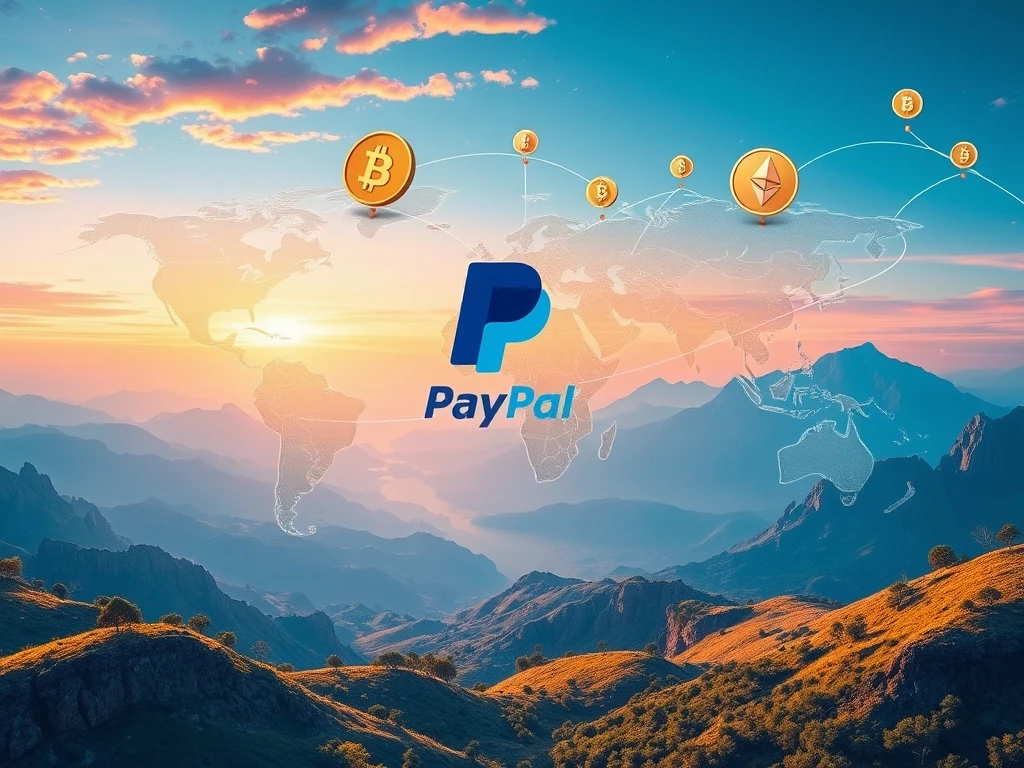Crypto Payments: Unlocking the Revolutionary Future of Global Transactions

The cryptocurrency landscape is rapidly evolving. A significant shift is underway, moving from speculative assets to practical applications. Indeed, a recent development signaled this change powerfully: a checkout button. PayPal activated its **crypto payments** feature for US merchants. This move promised near-instant settlement. It also offered international fees up to 90% lower than traditional methods. This substantial reduction in costs reshapes cross-border commerce economics. Furthermore, it highlights the next phase of crypto adoption. This phase involves embedded, accessible payments, rather than flashy, trader-centric speculation.
Crypto Payments Drive Global Commerce
The integration of cryptocurrency into everyday transactions marks a pivotal moment. PayPal’s new service supports over 100 tokens and wallets. It settles transactions into stablecoins or fiat behind the scenes. This simplicity meets mainstream user expectations. Consequently, it demonstrates how **crypto payments** can seamlessly integrate into daily life. This innovation significantly reduces costs. For instance, remittances previously costing 5%-10% now cost around 0.99% through PayPal’s program. This represents a meaningful transfer of value to small businesses and families. When costs fall, transaction volume typically rises. Therefore, companies behaving like regulated financial utilities will emerge as leaders in this space.
Corporate signals also confirm this trend. JD.com, for example, plans to seek stablecoin licenses in major markets. Their goal is to reduce cross-border settlement times to mere seconds. This illustrates the true shape of mass adoption. It does not require everyone to understand seed phrases. Instead, it lets payments work faster and cheaper within trusted tools. This pragmatic approach is driving real-world utility.
Regulatory Clarity for Stablecoin Regulation
For years, developers sought clear compliance pathways. This clarity first emerged in the payments sector. Europe’s MiCA framework established a single rulebook for stablecoin issuance and e-money tokens. Key provisions will take effect in 2024–2025. Singapore’s framework outlines redemption, reserve, and disclosure rules for single-currency stablecoins. Hong Kong has also moved from pilot programs to full regulation. It now licenses stablecoin issuers. While trading regulations remain complex in many regions, payments have a clear regulatory path. Stablecoins are increasingly viewed as financial infrastructure, not speculative instruments. This focus on **stablecoin regulation** provides much-needed stability.
Policymakers, however, still express concerns. They worry about capital flows, consumer protection, and illicit finance. These are valid concerns, especially as regions like mainland China explore crypto via Hong Kong’s cautious regime. Market builders must welcome stringent audits. They must also embrace fast redemption, robust reserve quality rules, and real-time monitoring. These are not obstacles. Rather, they are prerequisites for achieving global reach. Better compliance technology, often feared by skeptics, will ultimately unlock crypto’s mainstream utility. Thus, strong **stablecoin regulation** is essential for growth.
Unlocking Global Payments Through Invisible Adoption
Millions of people will likely use crypto without even realizing it. This ‘invisible’ adoption defines the future of **global payments**. PayPal’s system exemplifies this approach. It handles complex crypto processes behind the scenes. Users simply experience faster, cheaper transactions. This seamless integration is what mainstream users expect. It avoids the steep learning curve associated with traditional crypto interfaces.
This approach moves beyond the ‘trader-first’ design. Many early crypto apps prioritized speculation. They featured depth charts, reward pop-ups, and complex staking flows. Such designs exclude everyday users. A parent sending money to family or a freelancer invoicing abroad will find these interfaces off-putting. To reach these users, platforms must function more like utilities. They need to be compliant, predictable, and always available. This standard demands high uptime under heavy demand. It also requires clean fiat on/off-ramps. Furthermore, KYC/AML processes must resemble modern bank account openings, not weeklong scavenger hunts. This ensures **global payments** become accessible to everyone.
The Rise of Crypto Utility
The market is shifting. It moves from speculation to tangible **crypto utility**. This change impacts who benefits most from cryptocurrencies. Benefits are shifting from traders to businesses and households. The economic advantages are clear. Lower transaction costs directly improve financial outcomes for many. Companies that embody regulated financial utility standards will thrive.
Analysts consistently highlight this point. Stablecoins intersect traditional finance and crypto. Their regulatory momentum is unparalleled across jurisdictions. Payments represent the most transparent use case today. Stablecoins serve as the rails powering these payments. This practical application underscores the true **crypto utility**. It demonstrates how digital assets can solve real-world problems.
Some readers may initially resist this pragmatism. A future where large payment companies mediate stablecoins might feel like a return to traditional gatekeepers. Others might object to stablecoins’ systemic and policy risks. Europe’s ECB has voiced these concerns forcefully. However, these critiques are constructive. They sharpen the mandate for robust oversight and resilience. This is vital as payment systems scale globally. Ultimately, the focus remains on secure and efficient **crypto utility**.
PayPal Crypto: A Blueprint for Mainstream Integration
The success of platforms like **PayPal Crypto** offers a clear blueprint. It shows how to achieve mainstream crypto integration. These platforms empower back offices. They leverage blockchain benefits like shared, tamper-evident records. This reduces duplicate audits and speeds up reconciliations. Mobile-first design is also crucial. Most payments originate on a phone, so intuitive mobile interfaces are essential. Customer support must speak each market’s language and understand local laws.
The takeaway is evident: payments can be regulated and scaled effectively. This can happen sooner than other crypto verticals. The market demands reliable infrastructure. It requires systems that look and behave like regulated financial utilities. This is precisely what **PayPal Crypto** is demonstrating. It offers a model for future adoption. By prioritizing utility, compliance, and user experience, crypto can reach its full potential. This path ensures widespread, secure, and efficient digital transactions for everyone.









